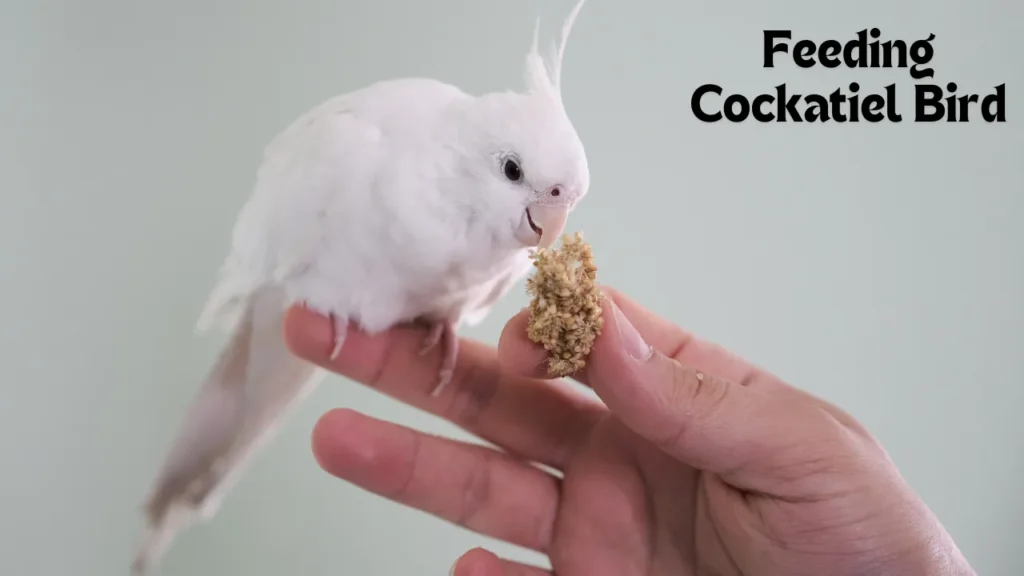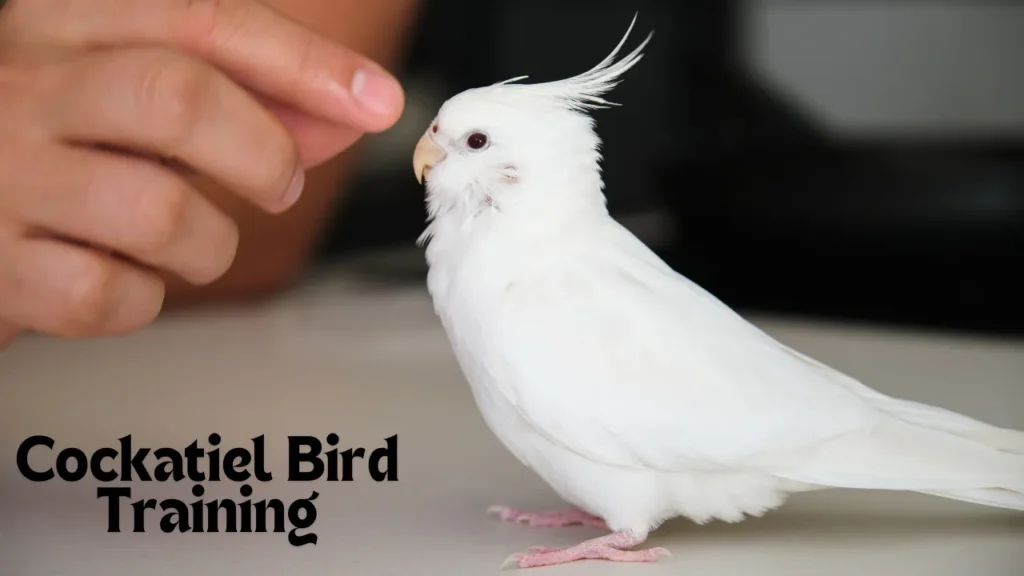Introduction
Cockatiel are charming and affectionate birds that make fantastic pets. With their friendly personalities and delightful whistling, it’s no wonder they are one of the most popular pet birds. But owning a cockatiel comes with responsibilities. Providing proper care is essential for their well-being and happiness. In this guide, we’ll walk you through everything you need to know to ensure your feathered friend lives a long, healthy, and joyful life.
Understanding Cockatiels
Origin and Natural Habitat
Cockatiels hail from Australia, where they thrive in the wild, flitting about in open spaces, woodlands, and scrublands. Understanding their origins helps us create an environment that caters to their natural behaviors and needs.
Physical Characteristics
Cockatiels are small to medium-sized birds with a distinctive crest on their heads. They typically have grey bodies with white wing patches and a striking yellow face with bright orange cheek patches. Their physical traits are not just for show; they play a role in communication and social interactions.
Common Behaviors and Traits
Cockatiels are social, curious, and can be quite playful. They enjoy interacting with their human companions and can develop a strong bond with them. Recognizing their behaviors, such as head bobbing, whistling, and crest movements, can help you understand their mood and needs.
Preparing for Your Cockatiel
Choosing the Right Cage
Your cockatiel’s cage is their home, so it’s crucial to choose one that is spacious, safe, and comfortable. Look for a cage that is at least 20x20x24 inches with horizontal bars for climbing. Ensure the spacing between bars is no more than 1/2 inch to prevent escape or injury.
Essential Accessories and Toys
A well-equipped cage should include perches of varying diameters, food and water dishes, and plenty of toys to keep your bird entertained. Swings, ladders, and chew toys are great options. These accessories not only provide physical activity but also mental stimulation.
Setting Up a Safe Environment
Place the cage in a quiet, safe area of your home away from drafts, direct sunlight, and toxic fumes. Cockatiels are sensitive to strong smells and can be affected by household cleaners, smoke, and non-stick cookware fumes.
Feeding Your Cockatiel

Ideal Diet for Cockatiels
A balanced diet for cockatiels includes a mix of seeds, pellets, fresh fruits, and vegetables. Seeds should make up about 25-30% of their diet, while pellets should be the main staple. Fresh foods like apples, carrots, and leafy greens provide essential vitamins and nutrients.
Foods to Avoid
Avoid feeding your cockatiel avocado, chocolate, caffeine, alcohol, and high-fat or salty foods. These can be toxic and harmful to your bird’s health. Always ensure that fresh water is available and change it daily.
Tips for Maintaining a Balanced Diet
Gradually introduce new foods and watch how your bird reacts. Since cockatiels can be selective eaters, patience is essential. Provide a diverse range of foods to ensure they get all the essential nutrients. Regularly check their weight to avoid obesity or malnutrition.
Health and Wellness
Common Health Issues
Cockatiels can be prone to respiratory infections, feather plucking, and calcium deficiencies. Keep an eye out for symptoms like sneezing, discharge from the nostrils, changes in droppings, or unusual feather loss.
Regular Health Checks
Perform regular health checks by examining your bird’s eyes, beak, feathers, and droppings. Schedule annual visits to an avian vet for a comprehensive health check-up. Identifying problems early can help avoid more severe health complications.
Finding a Trusted Avian Vet
Having a reliable avian vet is crucial. Look for a vet who specializes in birds and has experience with cockatiels. They can provide valuable advice on diet, care, and treatment of any health issues that arise.
Grooming Your Cockatiel
Bathing Tips
Cockatiels enjoy baths and it’s an important part of their grooming routine. You can offer a shallow dish of lukewarm water or mist them gently with a spray bottle. Ensure they have a warm, draft-free place to dry off afterward.
Nail and Beak Care
Regularly check your cockatiel’s nails and beak for overgrowth. Provide cuttlebones and wooden toys to help keep their beak in shape. If needed, a vet can trim their nails and beak safely.
Feather Maintenance
Feather health is vital for a cockatiel’s overall well-being. Provide a balanced diet to support feather growth and maintenance. Regular bathing helps keep feathers clean and in good condition.
Training and Socializing

Basic Training Techniques
Training your cockatiel can be a fun and rewarding experience. Begin with basic commands such as “step up” by employing positive reinforcement methods. Be patient and consistent, and always reward good behavior with treats and praise.
Encouraging Social Behavior
Cockatiels thrive on social interaction. Spend time with your bird daily, talking, playing, and engaging in activities together. Social birds are happier and less prone to behavioral issues.
Building Trust with Your Bird
Building trust takes time and patience. Approach your cockatiel calmly and speak softly. Allow them to come to you at their own pace. Over time, they will learn to trust and enjoy your company.
Creating a Stimulating Environment
Importance of Mental Stimulation
Mental stimulation is essential to prevent boredom and related behaviors like feather plucking. Offer a diverse selection of toys, puzzles, and engaging activities to keep your cockatiel entertained.
Toys and Activities to Keep Your Bird Engaged
Rotate toys regularly to maintain your bird’s interest. Introduce new toys gradually and observe how your cockatiel interacts with them. Foraging toys and interactive games are excellent for mental stimulation.
Rotating Toys to Maintain Interest
Switch out toys every week or two to keep things fresh and exciting for your bird. This prevents boredom and encourages exploration and play.
Understanding Cockatiel Communication
Recognizing Vocalizations
Cockatiels are known for their vocal abilities. They use a range of sounds to communicate, from whistles and chirps to squawks. Learning to recognize these vocalizations can help you understand your bird’s needs and emotions.
Body Language Cues
In addition to vocalizations, cockatiels use body language to express themselves. Watch for signs like crest position, wing movements, and tail bobbing. These cues can indicate whether your bird is happy, curious, or agitated.
How to Respond to Different Signals
Respond to your cockatiel’s signals appropriately. Calm behavior can be rewarded with attention and treats, while signs of stress or agitation may require a gentle approach or a break from interaction.
Handling and Bonding
Proper Ways to Handle Your Bird
Handling your cockatiel correctly is important for their safety and comfort. Always support their body and avoid squeezing. Use gentle, confident movements to prevent startling your bird.
Tips for Bonding and Building a Relationship
Spend quality time with your cockatiel daily. Talk to them, play with them, and involve them in your daily activities. Consistent interaction helps build a strong bond and trust.
Dealing with Biting and Other Issues
If your cockatiel bites, try to understand the cause. It could be fear, aggression, or territorial behavior. Avoid punishment and instead, use positive reinforcement to encourage gentle behavior.
Breeding and Nesting

Basics of Cockatiel Breeding
Breeding cockatiels requires knowledge and preparation. Ensure both birds are healthy and mature. Provide a nesting box and a quiet, safe environment for breeding.
Creating a Nesting Environment
A suitable nesting environment is crucial for breeding success. Provide a clean, spacious cage with a nesting box filled with appropriate nesting materials like shredded paper or wood shavings.
Caring for Eggs and Chicks
Once eggs are laid, ensure the nesting area is warm and quiet. Monitor the eggs and chicks closely. Provide a high-protein diet to support the parents and chicks during this time.
Traveling with Your Cockatiel
Preparing for Travel
Traveling with a cockatiel requires preparation. Use a secure travel cage and ensure your bird is comfortable and safe. Pack essential supplies like food, water, and a familiar toy.
Tips for a Stress-Free Journey
Minimize stress by covering the travel cage with a light cloth to block out distractions. Keep the journey as smooth as possible and avoid sudden movements or loud noises. Talk to your cockatiel calmly during the trip to provide reassurance.
Ensuring Safety During Travel
Always secure the travel cage in your vehicle to prevent it from shifting during transit. Never leave your bird unattended in a parked car, as temperatures can quickly become unsafe. Upon arrival, give your cockatiel time to acclimate to the new environment before letting them out.
Seasonal Care
Adjusting Care for Different Seasons
Cockatiels can be sensitive to temperature changes. In the winter, keep their environment warm and away from drafts. During the summer, ensure they have plenty of fresh water and a cool place to retreat from the heat.
Managing Temperature Changes
Use a room thermometer to monitor your bird’s environment. In colder months, consider a heated perch or placing the cage in a warm room. In hot weather, provide a shallow dish of water for bathing and misting to keep your cockatiel cool.
Providing Comfort During Molting
Molting can be uncomfortable for your cockatiel. Provide extra nutrients in their diet to support feather growth, and offer frequent baths to help with the itching. Be patient, as your bird may be more irritable during this time.
Cockatiel Enrichment Activities
DIY Toy Ideas
Creating your own toys can be a fun and cost-effective way to keep your cockatiel entertained. Use safe materials like untreated wood, paper, and natural fibers. Simple toys like hanging ropes, shreddable paper, and puzzle feeders can provide hours of amusement.
Fun Games to Play with Your Bird
Interactive games are a great way to bond with your cockatiel. Teach them to play fetch with small, bird-safe balls, or set up an obstacle course using household items. These activities engage both their mental and physical faculties.
Encouraging Natural Behaviors
Encouraging natural behaviors like foraging and exploring can keep your cockatiel happy and healthy. Hide treats in their cage or create a foraging box filled with paper and small toys. This replicates their inherent drive to forage for nourishment.
Conclusion
Caring for a cockatiel is a rewarding experience that requires dedication and knowledge. By understanding their needs and providing a nurturing environment, you can ensure your feathered friend leads a happy and healthy life. From choosing the right cage to ensuring a balanced diet and regular health checks, every aspect of care contributes to your bird’s well-being. Remember, patience and consistency are key. With time and effort, you’ll build a strong bond with your cockatiel, enriching both your lives.
You can also learn about: Canary Bird: How to Care for Canary Bird – A Step-by-Step Guide

